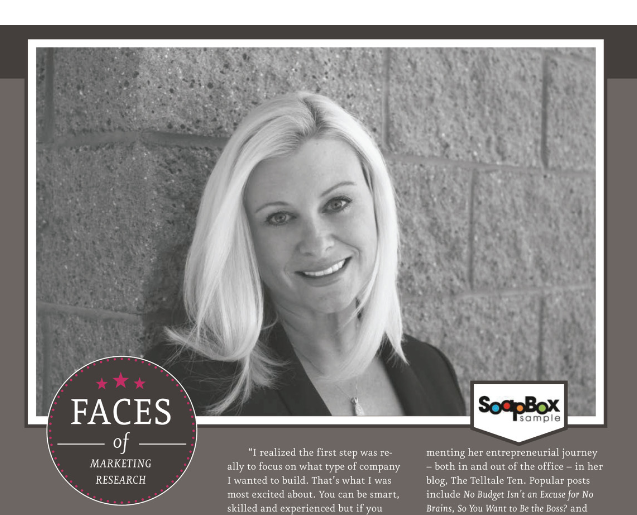Highlights from CES 2018 and Why Researchers Should Care
Where can you play ping-pong with a robot, fall into love with a mechanical puppy and see inside a refrigerator without opening the door? At CES, the Consumer Electronics Show. Every January tech companies from around the globe convene on Las Vegas to showcase their products — gadgets and gizmos that consumers can look forward to one day owning — sort of. They won’t be coming to a store near you anytime soon, and a lot of them leave you wondering – who would actually want that? In the aftermath of CES 2018, many critics pointed out that most of the products on display would only appeal to two types of people – people with money to burn and lazy people with money to burn. But we don’t have to rely on guessing who would buy these things, because we can actually ask people and find out. (Yay research!) SoapBoxSample conducted a mini poll* to gauge people’s awareness of CES and to find out if consumers would actually buy any of these high-tech gadgets. (You’ll find the results sprinkled throughout this article. I had to find some way to get you to read the whole thing.)
The research industry has been accused of being slow to adapt. While analysts are locked in rooms figuring out how to produce non-biased sampling frames, people are out making robots with Artificial Intelligence. The very same robots you can see at CES. The tech industry could benefit from paying attention to what consumers actually want (something research can supply), but researchers should be paying attention to the tech industry because big changes in the way people use tech in their everyday lives provides new opportunities for gathering data.
 “Alexa, let’s do a survey”
“Alexa, let’s do a survey”
At CES this year, Google came out looking like they were trying too hard. They built a three-story installation in the Las Vegas Convention Center parking lot. They also clearly shelled out big bucks for an advertising presence that plastered the entire town with the phrase Google wants you to remember – Hey Google. Amazon didn’t exhibit at all. They didn’t need to, because every other device at CES boasted about being “Alexa compatible.” All the free marketing garnered by Amazon, in contrast with Google’s flashy displays made Amazon look like the cool kid who doesn’t have to try to be cool.
People love the Amazon Echo. They consider Alexa to be a trusted part of their family. This is good news for researchers. When people are taking voice-activated surveys through Alexa (coming soon), the higher levels of trust will evoke more accurate, detailed, and honest responses from respondents.
Car tech – knowledge drives enthusiasm
You can’t talk about CES without bringing up the cars. They’re sleek, they’re stylish, they glistening under the showroom lights. I’m not a car person at all (my car has roll-up windows), but these vehicles were really beautiful. As a non-car-person, what I appreciated about the new smart dashboards and infotainment systems is that they were built to provide the driver with more insight into the inner workings of the car, something that I wouldn’t be able to assess by opening the hood.
As car manufacturers are scrambling to bring the first self-driving cars to market, they also have to convince people that self-driving cars are safe. Last quarter SoapBoxSample published the results of an internal study on the public’s perception of self-driving cars. Almost half of those surveyed believe that self-driving cars are dangerous and would not feel comfortable sharing the road with them. Only 28% said they looked forward to owning one. Developing smart dashboards that give drivers detailed information about how the car is operating is one way that car manufacturers can combat negative views of their product’s safety.
Related: Who’s in the Driver’s Seat? An Infographic About Self-driving Cars
 Beauty tech – look better, feel worse
Beauty tech – look better, feel worse
I tried out the HiMirror, one of CES’s #beautytech products. The HiMirror measures your pores, dark spots, wrinkles and dark circles. Just what women need, right? A super judgy mirror. Their marketing promised that the in-depth analysis would result in better “skin care goal-setting”. But what is the goal, to stop aging, or to sell products? The next generation of the HiMirror will probably show targeted ads for skin care products. I think I would rather skip the recommended products, and not know that my dark circles had increased by 3%. Turns out most people agree with me. Our poll showed that 68% of respondents would not want to use a high-tech mirror that measures skin imperfections.
It’s not so much consumer electronics, as it is competitive electronics
Is there really a consumer demand for a laundry-folding robot the size of a washing machine that requires you to manually tag each item of clothing you own, and can only fold adult-sized clothing? (And by the way, it takes longer than folding by hand.) Of the nearly 1,000 people who answered our poll, 79% said no thank you to the $980 laundry-folding robot.
Are the companies that produce these robots more focused on giving consumers what they want, or trying to out-do their competitors? What you might notice about this year’s line of robots is that their designs are very similar. White casing, black trim — almost without exception. Did the robot manufacturers forget to do their competitive analysis? (Shameless plug – did you know that SoapBoxSample’s passive metering application is great for understanding how people interact with your brand’s competition online?)
 Can Americans fall in love with a robot dog?
Can Americans fall in love with a robot dog?
I’m not a dog person, or even a pet person, so I didn’t expect to catch feelings for SONY’s robot dog Aibo. But it won me over instantly. Aibo is life-like, expressive, and responds to voice and touch. Knowing that his OLED eyes were mechanical did not make them any less puppy-like. Aibo is currently only available in Japan and costs $1700. SONY has said that they expect to sell at least 150,000 units. Could Aibo gain the same type of popularity in the United States?
Americans are waaaaaay into their pets. Here are some highlights from SoapBoxSample’s 2016 survey of U.S. pet owners to prove it – more than 60% of pet owners sleep with their animals, 40% of dog owners dress their pets up in costumes, and 73% of pet owners believe their pets are “smarter than average”. Could a robot dog one day occupy the same space in our hearts (and in our beds)? According to the results of our poll – heck no. When asked if they could see robot pets becoming more popular than live pets, 89% said no.
Related: Valentine’s Day Pet-fographic – We Know Americans Have a Close Relationship with Their Cats and Dogs But Just How Close Are They?
The future is full of glitches
If robots had emotions, the Aeolus would have experienced total confusion during its live demonstration. The booth presenter repeatedly ordered the bewildered bot to pick up a remote control off the floor, which it finally did after about a minute or so. (This scenario would be nothing new for the 8.4% of U.S. households with teenagers.) But the limitations of the robot’s responsiveness are no hurdle when compared to its price tag. The company wouldn’t name the actual cost, other than to say it was “less than a vacation for a family of four.” For the purposes of our poll, we guessed the price to be $10,000. Turns out most people don’t really see the value in it. Over 83% said they would not be picking one up anytime soon.
I need a fridge with a camera in it
The ThinQ smart fridge unveiled by LG has a 29-inch touchscreen on the door. If you knock on the screen twice it becomes transparent so you can see the contents inside. But my favorite part was the wide-angle camera inside the fridge. How many times have you thought to yourself, “I wish I could look inside my fridge while I’m at the store so I can see what I need to buy”? Maybe never, but you know who else wants a look inside your fridge? Researchers. The smart kitchen of the future is a paradise for people who hate making lists, and for research ethnographers. With cameras inside every appliance, researchers can see inside the homes of their subjects without setting foot in the door, and more importantly, without disrupting the routines they are attempting to study.
Within the 2.6 million square feet of exhibit space occupied by CES, there were devices that could change our everyday lives, and some other ones that were pretty dumb. There were also plenty of opportunities for researchers. Tech companies seem to have bought into idea that they should be creating things that the public doesn’t know they want yet. Based on the public reaction to some of the products at the show, this might not be the best plan. Tech companies need consumer research more than ever to tell them if there’s a market for what they are attempting to create. Researchers should keep a close eye on developments in tech — there are lots of opportunities coming along for research to become less invasive, cheaper, more efficient and more accurate. The two industries should work together as we move into the next phase of consumer technology.
*P.S. By the way, this poll was a lot like the exhibits at CES, fun to look at, but lacking scientific validity (probably biased and non-representative).



 “Alexa, let’s do a survey”
“Alexa, let’s do a survey” Beauty tech – look better, feel worse
Beauty tech – look better, feel worse Can Americans fall in love with a robot dog?
Can Americans fall in love with a robot dog?